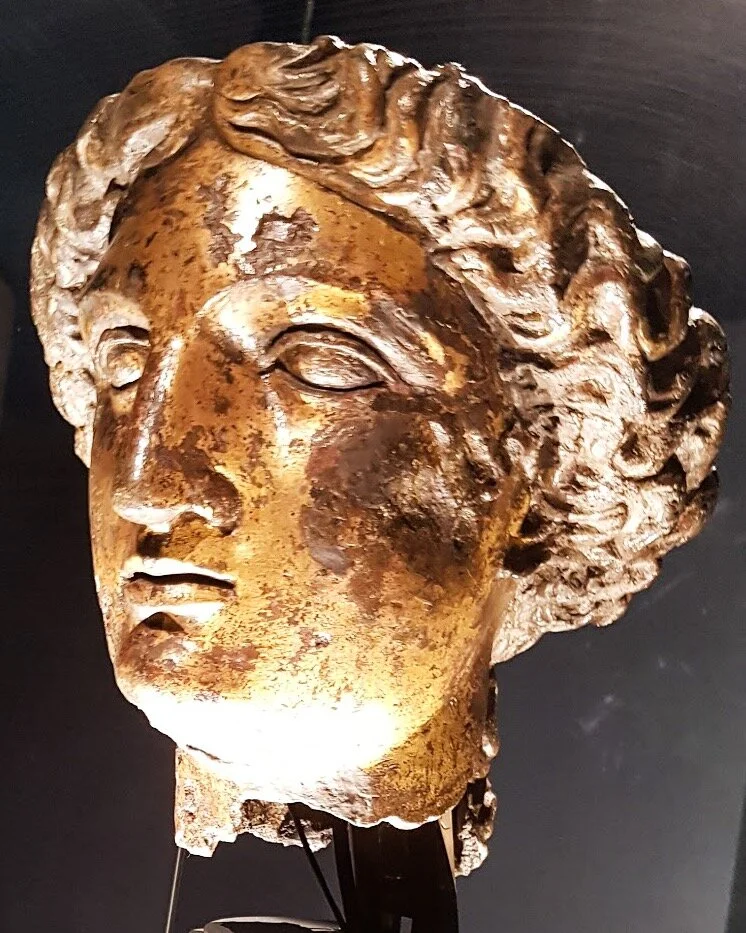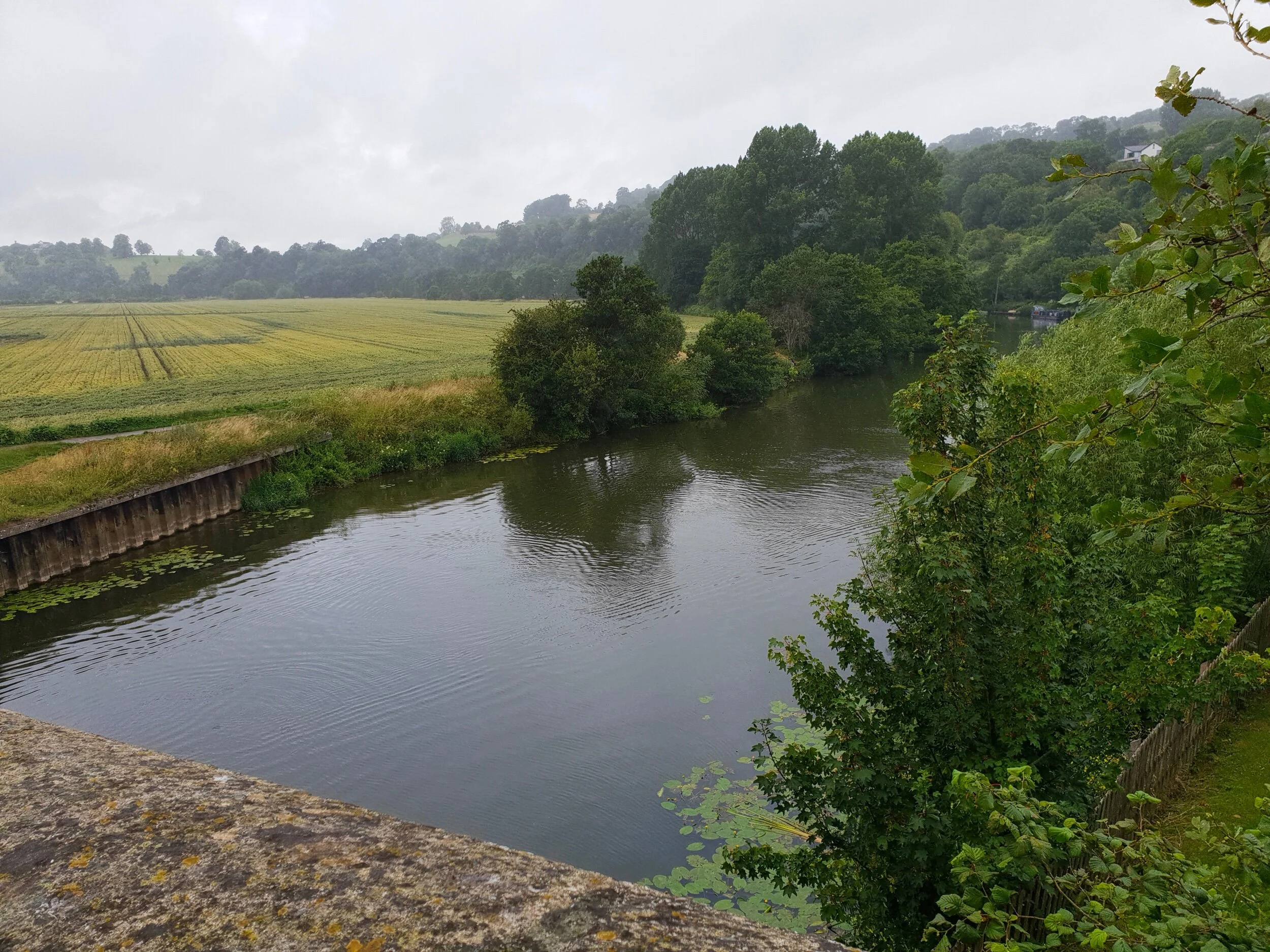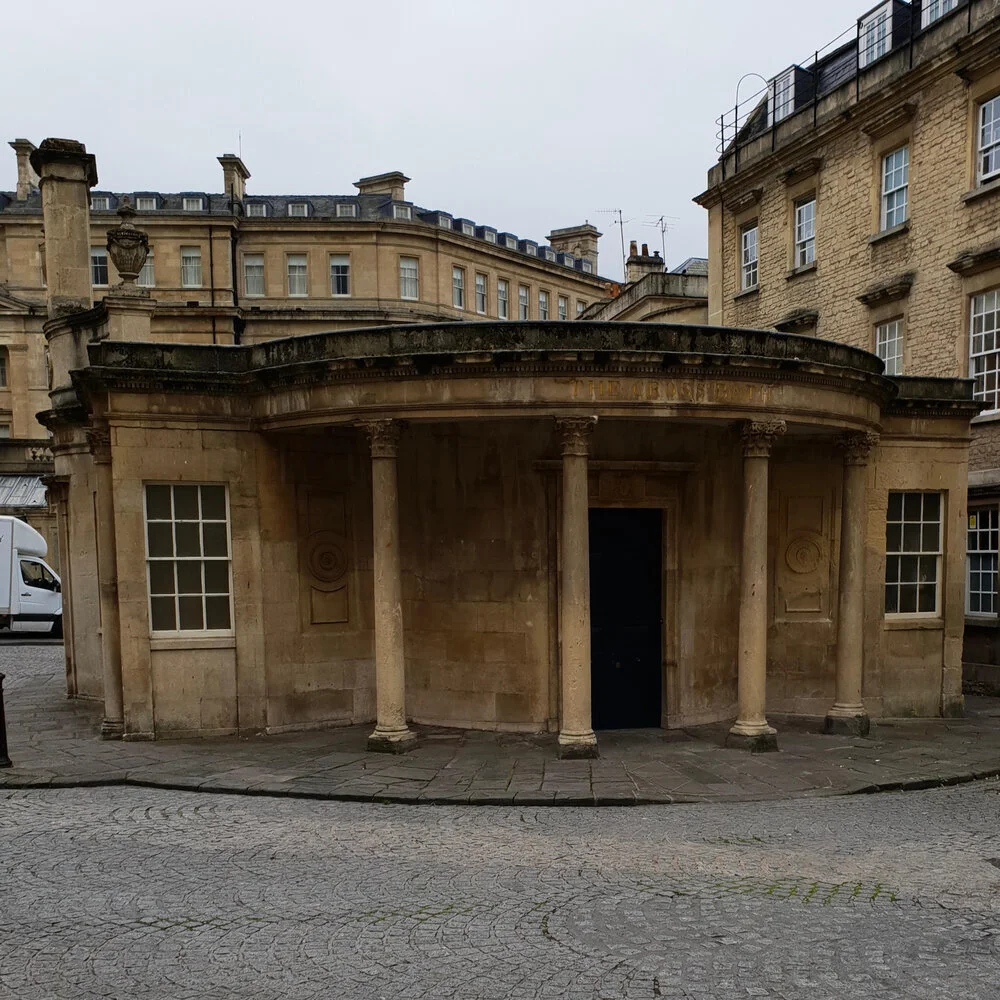Gilt Bronze Head
It was interesting, we thought, that in all the sightings of the goddess she was described as resembling the Roman Minerva as she appears from the gilt bronze head first discovered in 1727. So we decided to look more closely at the history around this.
The discovery of a gilt bronze head of the goddess Sulis Minerva was a very rare find and would seem to indicate that the Roman site at Bath was not a typical settlement. It is probably from a cult statue, which would have stood within her Temple beside the Sacred Spring. From there she may have looked out across the Temple courtyard to the site of the great altar, the site of sacrifice, which stood at the heart of the sacred space. The statue may be an original object from the foundation of the site in the later first century AD.
It was normal for the Romans to link existing Celtic goddesses with Roman ones with similar attributes and the head of Minerva resembles that of a Roman matron. However, although Minerva is the major goddess linked to the site in Roman and post Roman times Sulis still maintained her own dedications and priesthood and didn’t die out. In fact the very dedications that one might expect Minerva to be given, such as that of the haruspex, were given to Sulis: a sign that the native goddess retained a strong personal identity.
The discovery in 1979 of around 130 Roman era curse tablets, or defixione, confirmed this. These tablets invoke the intercession of the goddess Sulis Minerva in the return of stolen goods and curse the perpetrators of the thefts. Some of the curse tablets mention Sulis alone. They are mostly inscribed in British Latin but two of them are written in what may be a British Celtic language. If this is the case they are the only examples of an ancient written British Celtic language.
This would seem to confirm that the hot springs were a place of worship for the local population before the arrival of the Romans and that Sulis was a Celtic goddess who was later linked with Minerva, a Roman goddess with similar attributes when the site was developed by the Romans. In fact the naming of the town Aqua Sulis by the Romans is another indication of the importance of the Goddess Sulis.
The importance of the site to both Celts and Romans was the presence of the hot springs. Springs were revered in the Pagan world and were seen as the focal point of the power of the earth, where gods and goddesses dwelt and from which power and blessing flowed. The most famous of these sites was the oracle at Delphi, which was a sacred centre of the ancient world and was under the patronage of Apollo the sun god.
At Delphi there was a cave where a priestess went into a prophetic trance by breathing in fumes from a cavern below after first bathing in a sacred spring. If the ritual practices at Bath were the same as those at Delphi it is likely that the enclosure at Bath would not only have been a viewpoint for the visitor to look at the steaming waters, but might also have been the seat for a seer or seeress inspired by the heady fumes.
The name Sulis or Sul means gap, eye or orifice in Irish and old Welsh. The Celts believed in the power of nature and in the power of the Other World: a place that all life sprung from and where all would return after death. It is likely they would have viewed the site as an actual entrance into this Other World. As such it would have been a place where gifts from the Other World could be received but also a place where sacrifices would be made as an offering to the gods and goddesses who dwelt there.
The Celtic goddesses of springs were powers of fertility and therapy. They were also war goddesses. Minerva was a virgin goddess and concerned with helping mankind. She is the goddess of wisdom, clear thinking and good health, both mental and physical. She is also the goddess of war and is connected in this way with the Greek goddess Athena and the Morrigan, a Celtic war goddess.
Minerva was born of the titaness Metis who had been forcibly swallowed whole by Jupiter as he feared the child would grow stronger than he was and rule the heavens in his place. She burst from her father’s head fully armed and clad in armour. Despite her fully armed beginning, Minerva had grown into a more peaceful figure by the time she reached Bath, a symbol of Roman style, common sense and discipline ruling over the wilder side of elemental nature.
Minerva is the goddess of poetry, medicine, wisdom, strategic warfare, commerce, weaving and the crafts. She is often depicted with her sacred creature, an owl usually named as the ‘owl of Minerva’, which symbolised her association with wisdom and knowledge, as well as less frequently the snake and the olive tree. She was often called Belisima, a name that means exalted or bright one.
The picture of Sulis Minerva is therefore one of a goddess who mediates the powers of the Other World in a manner that is beneficial to mankind. She teaches the arts and sciences of peace and war, brings healing and controls the eternal fire or energy of the sun. The steaming waters of Aqua Sulis would have been thought of as heated by the eternal fire, which renewed the vigour of the sun in winter and the actual fire kept burning within the temple was a visible sign of this energy. The site of the hot springs in Bath was an important place of worship in Celtic times before the arrival of the Romans and that even after they developed the site the Celtic goddess, Sulis, retained her importance.
Ancient goddesses were often said to be triplicate in appearance and nature; three phases of one power, maiden, mother, crone. This can be seen in a primitive plaque found in the Bath area of the ‘Three mothers’ or ‘Triple Goddess’. The goddesses were worshipped separately and collectively but inevitably lead into one another in a ceaseless cycle of birth, life, death and ultimate re-birth.
All the sightings so far had described the goddess as resembling the Roman Minerva. What we decided to do next was to try to trace her origins back earlier: to look at her as a possible genius loci, a tutelary deity of place or a guardian spirit of the land. And also, to explore the aspect of her as a triple goddess: a figure that changed over time from a young wild Celtic maiden, to a more matronly Roman one and who, in the way that the Arthurian legends tell of the king returning at a time when the world was in need of him, might conceivably reappear now as the crone in a time of crisis, when the world was in need of her healing powers once more.
The gilt bronze head in all its glory.



